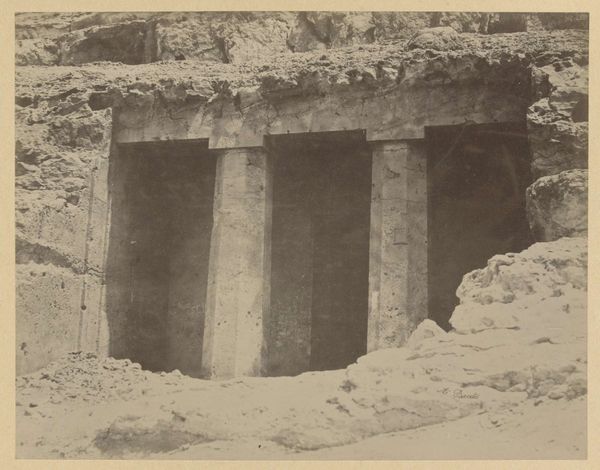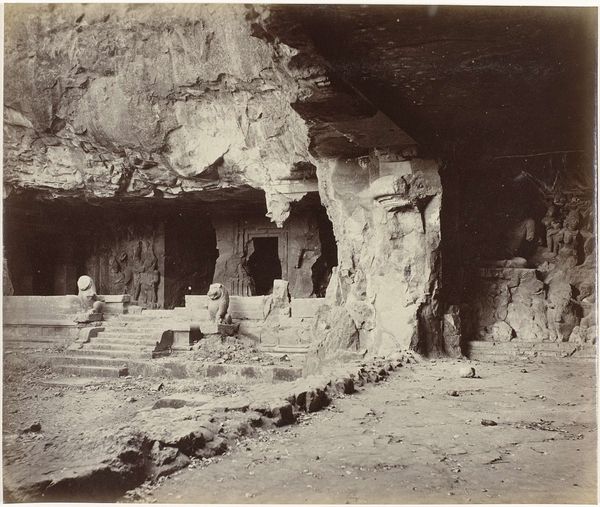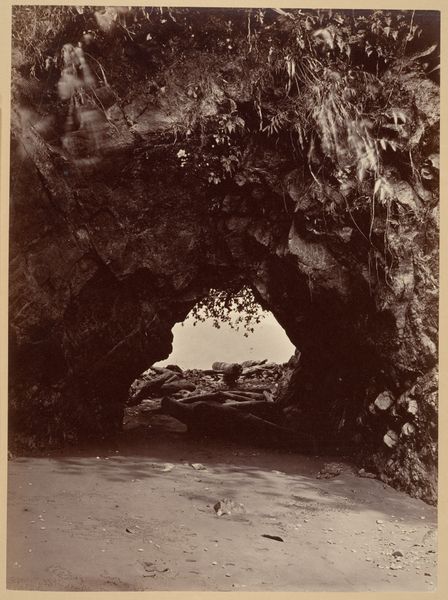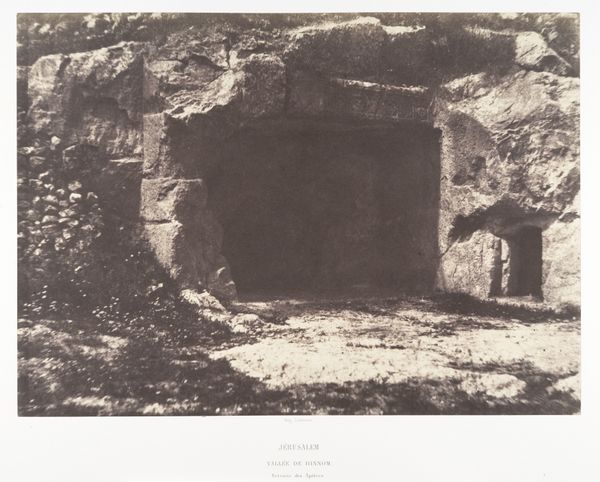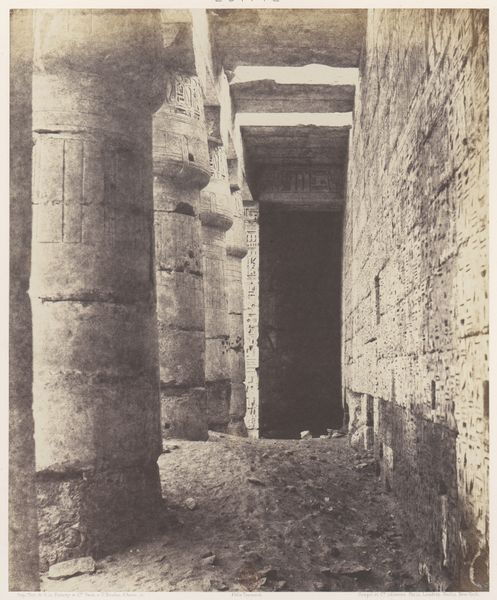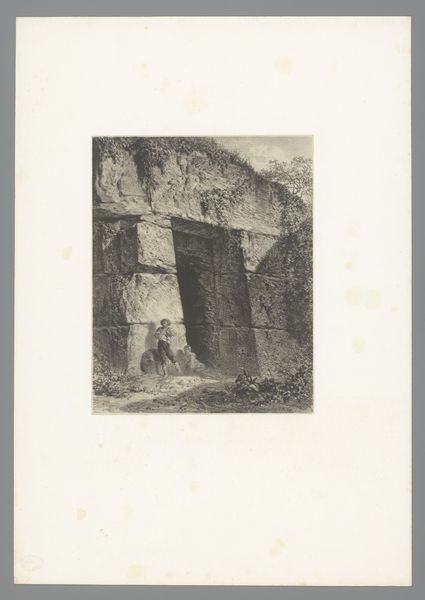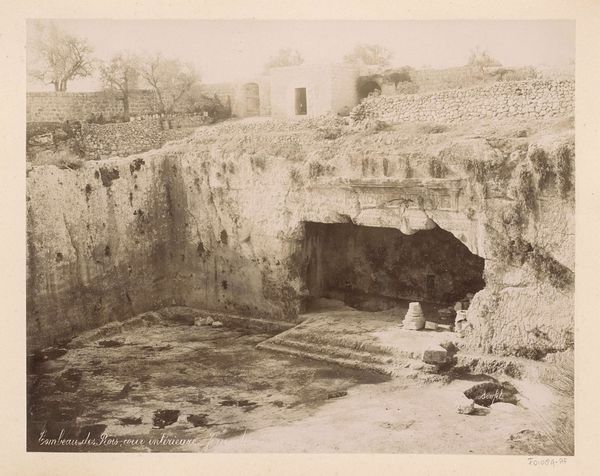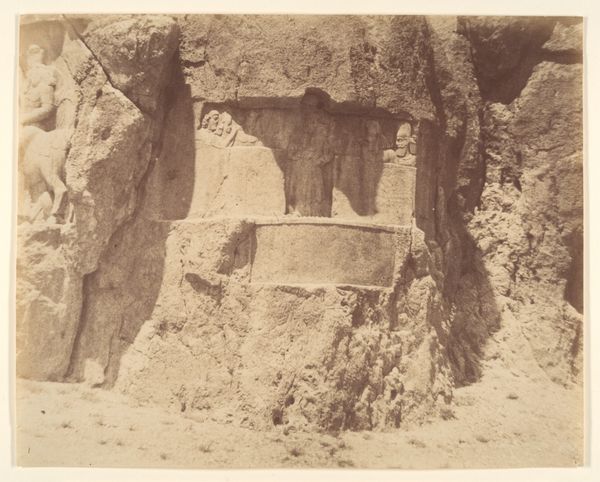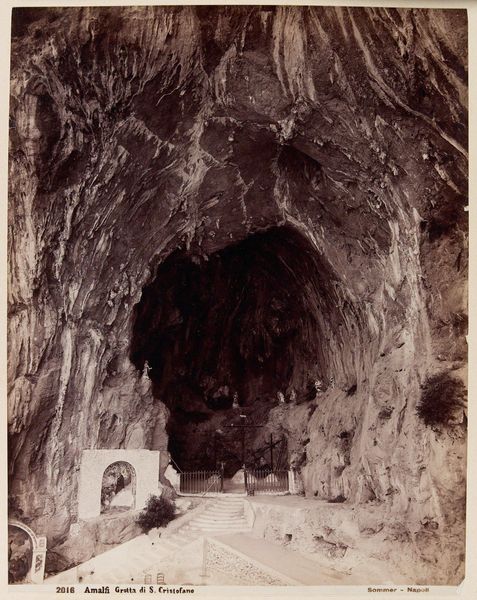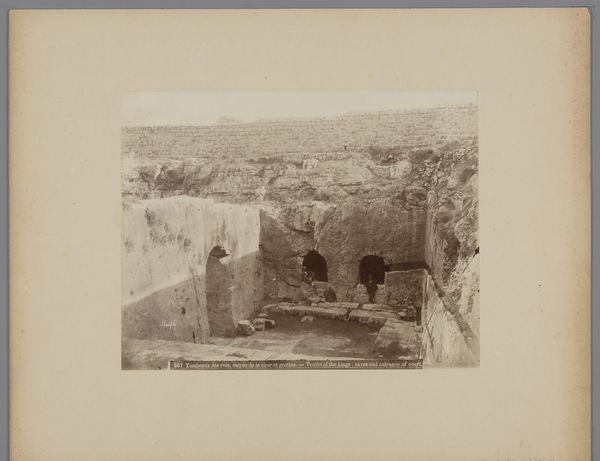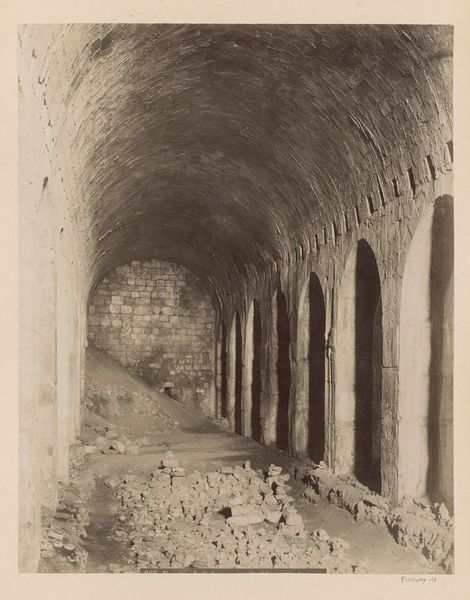
Dimensions: height 142 mm, width 94 mm
Copyright: Rijks Museum: Open Domain
Editor: This is “Gang met richtingbord naar het uitkijkpunt Wilhelmsblick bij Treseburg,” a gelatin-silver print with pencil and watercolors by E. Rose, dating from around 1870 to 1890. I'm struck by how this manufactured tunnel clashes with the natural rock formation. What does this juxtaposition suggest to you? Curator: Well, looking at it materially, the photograph itself is evidence of technological progress. Then you have the physical tunnel, presumably carved by laborers, and a sign directing people to a picturesque view. It all speaks to a society that’s actively shaping the landscape, turning natural wonders into consumable tourist experiences. Editor: That's fascinating. So you’re saying the value isn’t necessarily in the "view" itself, but in the *accessibility* to the view provided through labor and technology? Curator: Exactly. Consider the materials – the photographic chemicals, the tools used to carve the tunnel, even the manufactured sign. Each reveals a network of production, labor, and, ultimately, consumption. This wasn't a 'natural' discovery; it was a crafted experience for a particular social class with the leisure time to visit. Editor: I never considered that angle. It shifts the focus from appreciating nature to understanding the social dynamics at play in creating that appreciation. It makes you wonder about the laborers who physically built the tunnel and their access, or lack thereof, to this 'Wilhelmsblick' themselves. Curator: Precisely. The image, at its core, captures a moment in which nature becomes a commodity, reshaped by human hands for leisure and profit, exposing societal inequalities in access and consumption. Editor: Thanks, that gives me a lot to consider, looking at the material elements rather than just the romanticism of the landscape. Curator: And hopefully, that consideration will inform how you view all art moving forward!
Comments
No comments
Be the first to comment and join the conversation on the ultimate creative platform.
